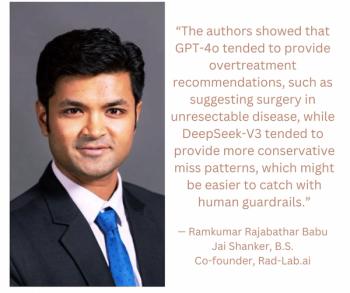
Gadolinium Not Associated with Adverse Neurologic Outcomes
Imaging with gadolinium does not put patients at risk for adverse neurologic outcomes later in life.
Gadolinium (Gd) exposure is not associated with adverse neurologic outcomes, according to a new study presented today at
Researchers from the United States sought to study the effects of Gd exposure on neurologic and neurocognitive function. "It's estimated that approximately 400 million doses of gadolinium have been administered since 1988," said lead author, Robert J. McDonald, MD, PhD, a neuroradiologist at the Mayo Clinic in Rochester, MN. "Gadolinium contrast material is used in 40 to 50 percent of MRI scans performed today."
The researchers used data obtained from the Mayo Clinic Study of Aging (MCSA). They compared neurologic and neurocognitive scores using standard multivariate methods between MCSA patients with no history of prior Gd exposure and those who underwent prior Gd-enhanced MR imaging. Progression from normal cognitive status to mild-cognitive impairment and dementia was assessed using multistate Markov model analysis.
There were 4,261 cognitively normal study participants, aged 50-90 (mean age 71.9). Of these, 1,092 (25.6%) received one or more GBCA doses (median: 2 doses, range: 1 to 28 doses) unrelated to their participation in the MCSA. Median time since first Gd exposure was 5.6 years. After adjusting for age, sex, education level, baseline neurocognitive performance, Charlson comorbidity index, and ApoE4 status, GBCA exposure was not a significant predictor of cognitive decline with changes in clinical dementia rating, Blessed dementia scale, or mental status exam score. Nor was there diminished neuropsychological performance or diminished motor performance. No dose-related effects were observed among these metrics.
"Right now there is concern over the safety of gadolinium-based contrast agents, particularly relating to gadolinium retention in the brain and other tissues," McDonald said in the release. "This study provides useful data that at the reasonable doses 95 percent of the population is likely to receive in their lifetime, there is no evidence at this point that gadolinium retention in the brain is associated with adverse clinical outcomes."[[{"type":"media","view_mode":"media_crop","fid":"64661","attributes":{"alt":"","class":"media-image media-image-right","id":"media_crop_9710982958645","media_crop_h":"0","media_crop_image_style":"-1","media_crop_instance":"8277","media_crop_rotate":"0","media_crop_scale_h":"0","media_crop_scale_w":"0","media_crop_w":"0","media_crop_x":"0","media_crop_y":"0","style":"height: 424px; width: 500px; float: right;","title":" MR images through, A, C, E, basal ganglia and, B, D, F, posterior fossa at level of dentate nucleus. Images are shown for, A, B, control group patient 4, and the, C, D, first and, E, F, last examinations performed in contrast group patient 13. Regions of interest used in quantification of signal intensity are shown as dashed lines for globus pallidus (green), thalamus (blue), dentate nucleus (yellow), and pons (red). ©RSNA 2017","typeof":"foaf:Image"}}]]
Newsletter
Stay at the forefront of radiology with the Diagnostic Imaging newsletter, delivering the latest news, clinical insights, and imaging advancements for today’s radiologists.




























